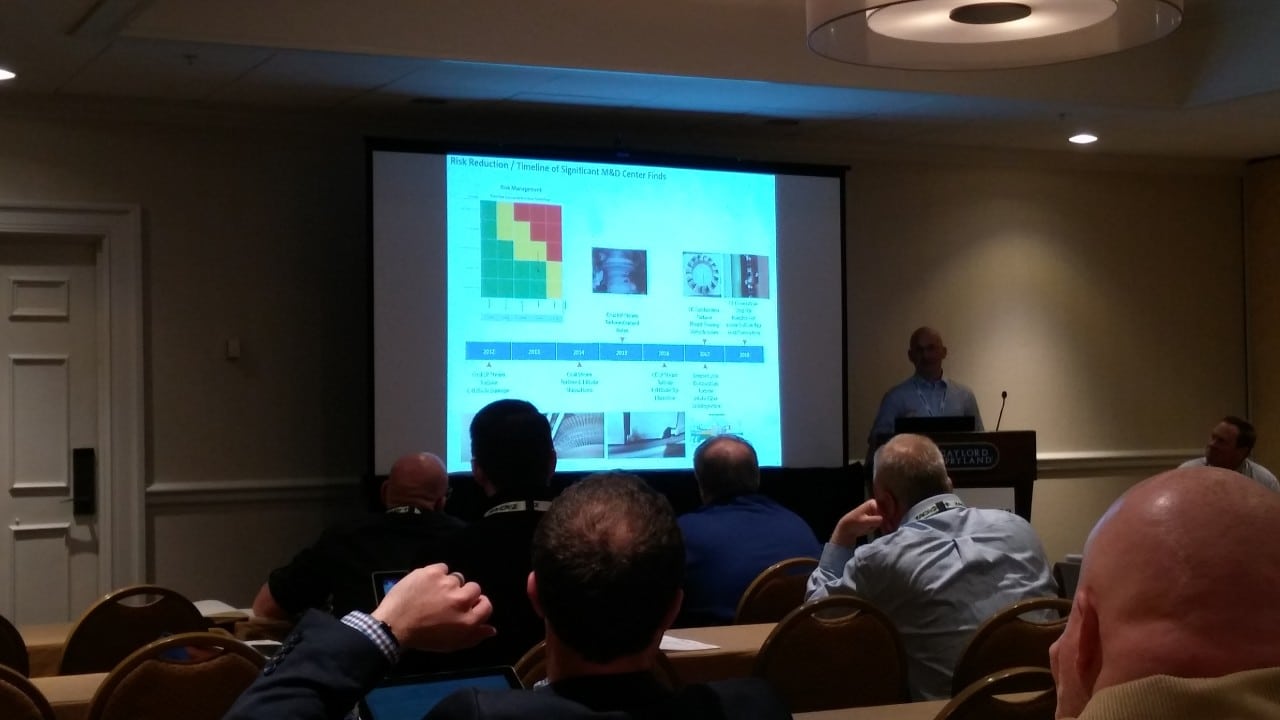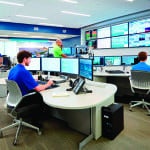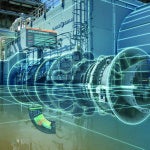The rise of digital technologies for power plants has moved in fits and starts over the past several years, with some generators quickly embracing digitization of their assets while others are looking to justify potential investments.
Suppliers of digital technologies have widely marketed the benefits, but many generators are looking to current end users for information about what the implementation of digitization means for their plants. Presenters at POWER magazine’s ELECTRIC POWER Conference + Exhibition on March 22 talked about the benefits—and some of the challenges—they’ve experienced with digitization at their facilities, in a session titled “Building a Business Case for Digital Technologies.”
Phillip Yakimow, manager and principal engineer for performance monitoring for Xcel Energy; Michael Reid, general manager for technical programs for Duke Energy; Crystal Bettinger, supervisor of predictive maintenance at Westar Energy’s Jeffrey Energy Center in Kansas; and Brian Wolf, lead performance and optimization consultant for Black & Veatch, presented case studies outlining how digitization has worked at their plants.
“You want people to see the monitoring and diagnostic [M&D] program is growing and providing value,” said Reid, who said Duke has added many additional sensors to equipment to capture data. “We’ve saved about 135% above what we spent on the additional sensors. People talk about saving money, but what we’re doing is getting to the work we should be doing and weren’t doing.”
Wolf and Bettinger talked about Westar’s M&D, which includes anomaly detection using advanced pattern recognition (APR) at three coal units (2,400 MW total generation capacity) and a 100-MW wind farm, measuring about 17,500 data points. “We measure vibration and [other data],” Wolf said. “We’re creating intelligent models to cover everything in the plant. The software may give us 100 things we need to look at every hour,” but the intelligence in the system determines what problems—usually just one or a few—are worthy of escalation.
“It also enables our [technicians] in the field to respond quickly on their phone or tablet when they’re notified of an issue,” said Bettinger, whose Westar utility, based in Topeka, Kansas, has total generating capacity of about 8,000 MW.
“Turbine vibration is different than a heat rate problem,” Wolf said, noting how his group’s software separates immediate problems from those that don’t need quick action. “Make your data smarter. You don’t need more data, you need it to work for you.”
Xcel Expanding M&D Program
Yakimow discussed Xcel’s monitoring and diagnostic (M&D) center in Denver, Colorado, which has helped serve the company’s Performance Monitoring Department. Yakimow said the utility has added all its fossil plants to the M&D program, and in November 2017 added wind farms and two nuclear facilities.
“Currently our fleet is about 14 gas and coal plants with 35 generating units, with about 800 M&D asset models” Yakimow said. “We have about 100 MW of wind, and will be adding about 600 MW in Colorado in the next year,” which will come from the Rush Creek Wind Project in Cheyenne, Elbert, Kit Carson, and Lincoln counties.
Yakimow said Xcel saved $18 million in avoided costs—a conservative estimate, he noted—based on about 1,500 actionable advisories since the M&D program was initiated.
Yakimow noted that digitization can save on maintenance costs through predictive maintenance, “acting as another failure barrier,” to reduce the risk of sudden equipment outages. He also said, though, that an M&D center is “not a substitute for operations, engineering or relevant plant experience.” He said training is important for those monitoring systems—“I ask them to go the plants to see how the plant operates, rather than sitting behind a desk,” he said—so they will have a better understanding of the data being monitored.
Yakimow noted Xcel tracks the savings from avoided costs, which can be “double-edged sword” when it comes time to determine operational budgets. “Plants are sensitive to that,” he said, referring to the impact of digitization on operations and maintenance. “It all comes back to how well you’re instrumented, and the accuracy of your [data] analysts.” He said potential justification for digitization includes savings from better parameter tracking in the plant, and in some cases savings on insurance premiums.
As for his path forward at Xcel, Yakimow said his program will likely add monitoring of gas pipeline compressors, and more M&D capability for wind and solar projects.
“We’ve got a total of 2,000 to 3,000 MW of wind coming [online] between now and 2020,” he said. “That creates great swings in load. We have to watch our plants more closely due to those swings, and the ramping up and down [that causes],” Yakimow said.
Duke Focuses on Critical Assets
Reid said Duke began combustion turbine M&D in 2004. “What we’ve done different from a lot of utilities is monitor a lot of additional sensors [over time],” he said. “We’re really focused on the critical assets. We’re trying to put the monitoring of the plants into the hands of the predictive maintenance [personnel].” He said promoting advanced diagnostics for generators, including electromagnetic signature analysis, is a large part of Duke’s effort.
Reid said Duke looks at its program as empowering “smart, connected power plants and assets. It’s an exercise in big data management. In order to do that you have to get people to act on that information.”
He said getting buy-in for digitization from the top levels of the company is about showing “opportunities and benefits. The opportunity to get more data is very valuable. Be sure to capture every single [advisory] you have from Day One. With [workforce reductions], we’re not able to [send more people] out to the plants to collect data, so having automation of traditional predictive maintenance work is very important.”
Bettinger agreed. “With our program, we wanted to leverage our current technology, software, and data, and preserve our knowledge base,” she said. “We have an aging workforce, and we didn’t want to get to that ‘Oh, what do we do’ moment.”
—Darrell Proctor is a POWER associate editor (@DarrellProctor1, @POWERmagazine)











